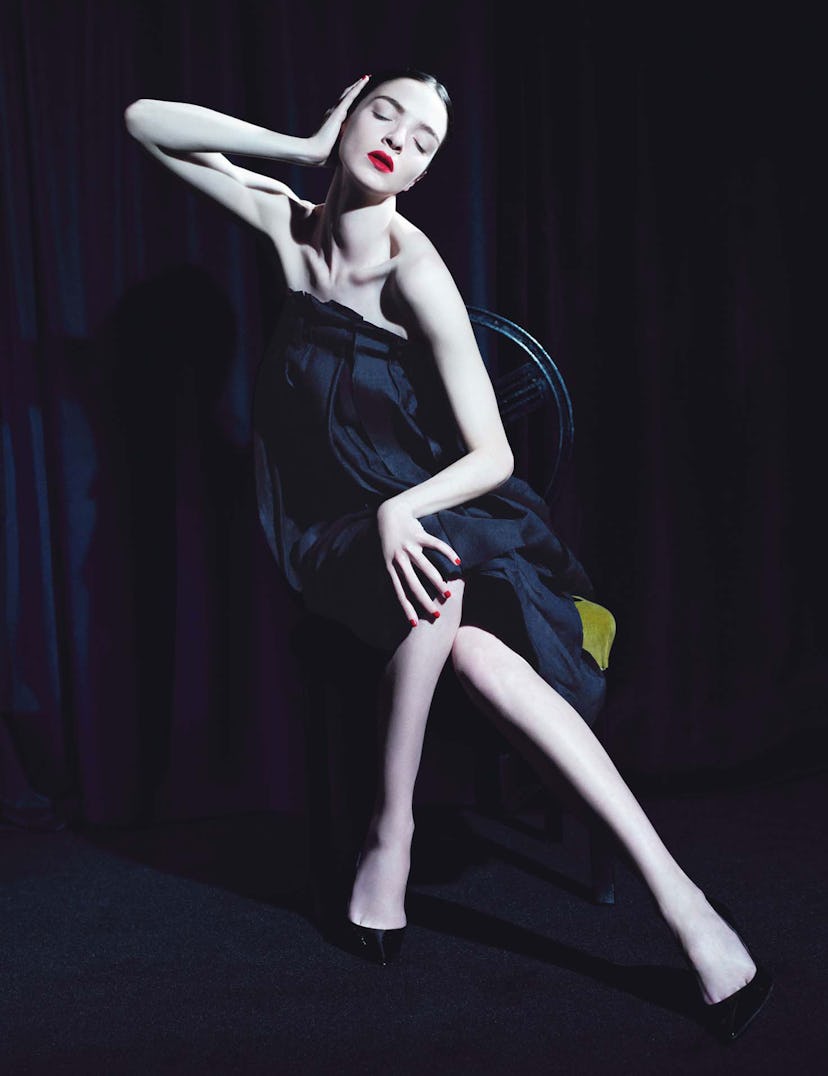An Avowed Fidgeter’s Guide to Meditation and Mindfulness
Can a mindfulness skeptic sit still long enough to find the center of the rapidly expanding meditation space?

Given that the whole world seems obsessed right now with meditation and mindfulness, my inability to quiet my thoughts, focus, and breathe has me stressed out. So much so that, a few weeks ago, when I caught my most cynical friend sitting in the lotus position in my living room, eyes closed, tuned in to the Headspace app on her iPhone, I walked over to the wet bar and fixed myself a monster martini, thinking, If I can’t meditate, I may as well medicate.
Recognizing that alcohol isn’t (always) the best way to center oneself, but needing a tonic for what I Google-diagnosed as “monkey mind,” I turned to the fitness guru Taryn Toomey, whose fast-paced hybrid mind-body workout the Class is a magnet for celebs and models like Jennifer Aniston and Christy Turlington Burns. Toomey recently developed the Class Relieve, a 20-minute mostly moving meditation for time-strapped folks in need of a quick, easily digestible dose of clarity and stress relief.
Of course, Toomey isn’t the first wellness-world heavy hitter in New York to dive into the ever-expanding (and rapidly monetizing) meditation space. Innovative studios have popped up all over the city, including Inscape, Intermix stores founder Khajak Keledjian’s temple to meditation, and Woom Center, which promises to “raise your vibration” through a blend of yoga, meditation, and sound therapy. But Toomey’s latest offering intrigued me for its brevity, accessibility, and quintessentially Toomeyan approach: movement, awareness, and peace of mind. As with all of her classes, cathartic exertion (bouncing, shaking, arm-flapping, forceful exhaling) and invigorating music are key. According to Toomey, the endorphin rush her regimen provides helps to shake off “density” in the mind and body before we try to sit in stillness. “We cleanse the palate of the body through movement and sound so we can witness ourselves more clearly,” she says.
The term “palate of the body” made me wonder whether I had missed a particularly esoteric biology class in high school, but I was nonetheless heartened to find a meditation class that felt modern. Still, I knew that my inner monkey needed, well, options, so I set up a Skype session with Sadie Adams, the founder of Ground Space for Meditation and Movement in Santa Monica. Enlightened Hollywood types are fans of Adams’s unique mash-up of meditative traditions and a concept called “embodiment,” which means cultivating presence and focus through consciousness of our physiology.
During our session, Adams gently tries to raise my awareness of the differentiation between the front and back of my body. Apparently, they are “holding space” for my middle body, where’s there’s a bunch of potential creativity lurking. Huh? “The concept is very potent, and actually very simple,” she says. “But it’s not meant to be understood cognitively.” That’s a relief, because I didn’t understand it at all. But 20 minutes into “embodying” my front, back, and middle, and centering around “the calm presence of my cellular fluid” (which sounds beyond woo-woo, but is oddly soothing), I was so relaxed that I blocked out traffic noise, forgot about my American Express bill, and melted into my desk chair. My focus was sharp for the rest of the day, and whenever I felt the familiar tug of stress, I tried to think about my cellular fluid’s calm presence.
Adams introduced me to her latest protégé, 27-year-old Alejandro Lázaro, who, through his wellness consultancy Unto Self, creates personalized meditation routines for clients using astrology and Kundalini numerology. Lázaro also happens to be—and I know it isn’t very evolved of me to point this out—superhot. But his charming loquacity and down-to-earth approach are (almost) as seductive as his ocean blue eyes. “The less expectation you have with meditation, the more fun and serendipity come with it,” he says. “The exploration begins with noticing, and can be found in ordinary moments like walking slowly in a garden.”
Or, as it turns out, by sharing a cup of tea. On the last stop of my magical meditation tour, I met the traveling tea goddess Baelyn Elspeth, aka Tian Wu, who turned me on to the practice of cha dao, or the Way of Tea, as taught to her by the tea master Wu De of Tea Sage Hut in Taiwan. (Wu De and his nonprofit Global Tea Hut project are revered among the tea faithful.) Using beautiful vessels, Elspeth serves the elixir at “tea sits,” held in such places as Ay’am on the Wetland, a crunchy-chic community space and healing collective in Playa del Rey, California; Space by Mama Medicine, in New York’s SoHo; and Puerh Brooklyn, in Williamsburg. You sit with a group in silence around a ceremonial table and are served steaming bowls of tea. “It’s not intimidating—all you have to do is show up and sit down,” says Ay’am founder Jessica Karr. Adds Elspeth, “It gives us quiet time to reflect, cultivate awakened presence, and engage the five senses in subtle and more mindful ways, which is useful in a world where the sensory experience is so overly stimulated.” I know, I know, more woo-woo talk. But at the very least, it got me contemplating how to kick my coffee habit.